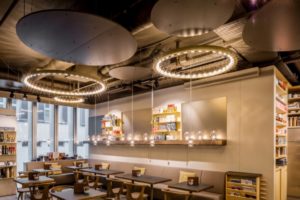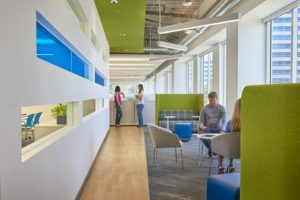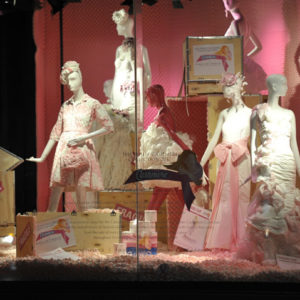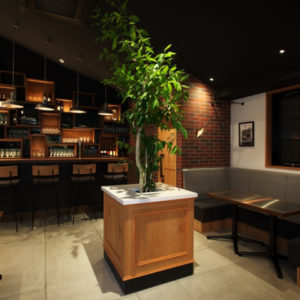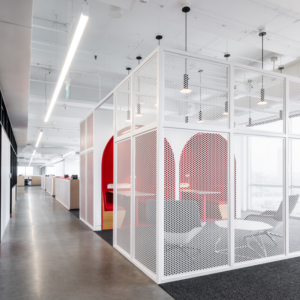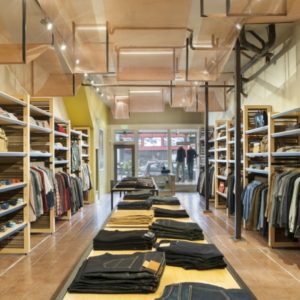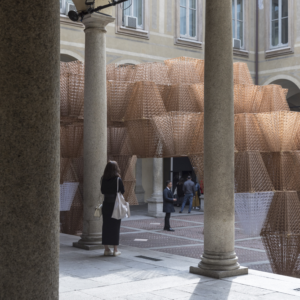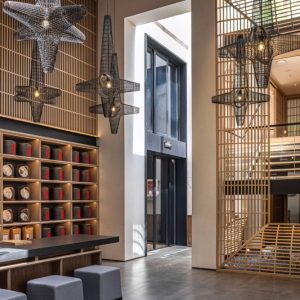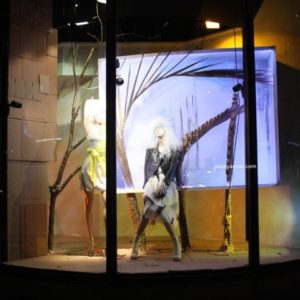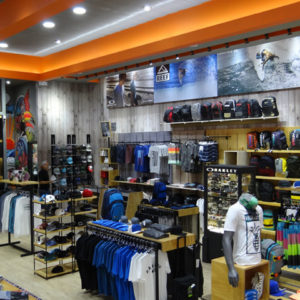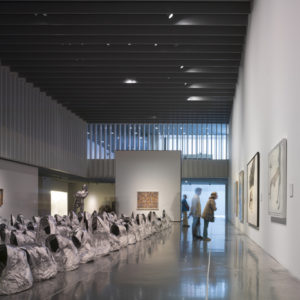


The Thompson Exhibition Building was designed for Mystic Seaport, Museum of America and the Sea, as a keynote building for the 19-acre riverfront campus. The project’s mission was to transform the north end of the Seaport to greatly enhance the quality of exhibition space and to offer a more robust year-round experience for visitors. The building is located where the Seaport’s previous indoor-oriented exhibit spaces were concentrated, and forms the new Donald C. McGraw Gallery Quadrangle. This sociable greensward, with a panoramic view of the Mystic River, provides an appealing venue for activities ranging from outdoor concerts to impromptu picnics.
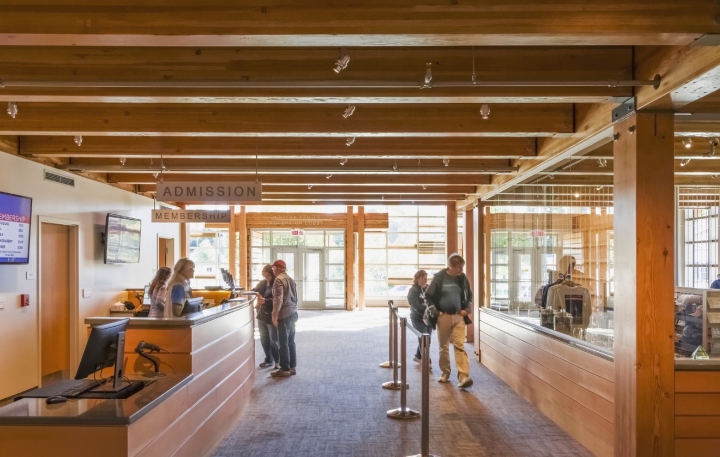
In addition to a 5,000-square- foot exhibition gallery with a high ceiling for displaying boats, the building features visitor reception and events space, a retail shop, a café and outdoor terraces overlooking the Mystic River. Energy-efficient components and geothermal heating and cooling are also incorporated in the design. The flexible exhibition space features soaring ceilings and demountable walls to accommodate objects of varying size and installations of all types, from watercraft to priceless works of fine art and gallery-based educational programs.

A riverfront gathering room graces the west side of the building and can be reconfigured for conferences, additional gallery space, or educational programs, adding to the new building’s versatility. The Thompson Exhibition Building incorporates a wraparound deck that allows visitors to enjoy the riverside setting and serve as a covered overlook to the Quadrangle green. Overall, the building stands for what we came to regard as “the geometry of the sea” – the spiral shape of sea life, the kinetic movement of ocean swells, the crash of waves on the shore, the billow of sails, and the faring of wooden hulls.
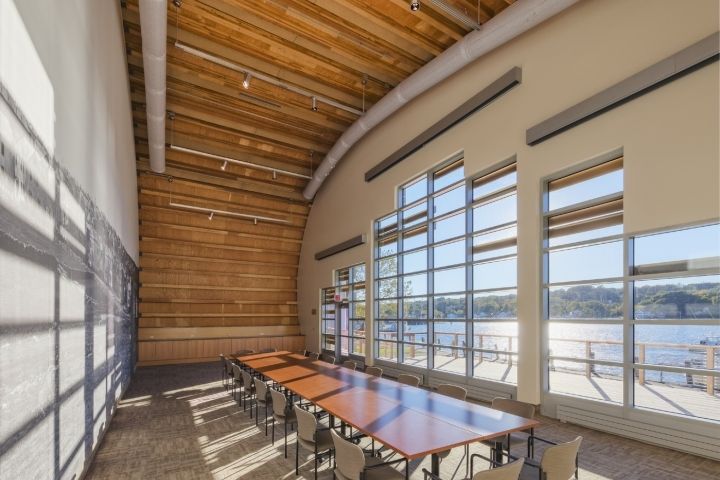
Wood was the ideal material for these purposes because it can economically enclose a large clear-span space while forming complex organic geometries. The intention overall was a wooden structured volume that would suggest a hull’s interior architecture. To support a long porch along the north edge of a new quadrangle, wooden columns and struts give the effect of sailing vessels’ masts and spars. Railing cables and turnbuckles provide detail around the deck to conjure ship’s rigging. For the building’s structure, curved glued-laminated wood ribs were utilized to imply a sailing ship’s top timbers, the curving members that delineate a hull’s shape.
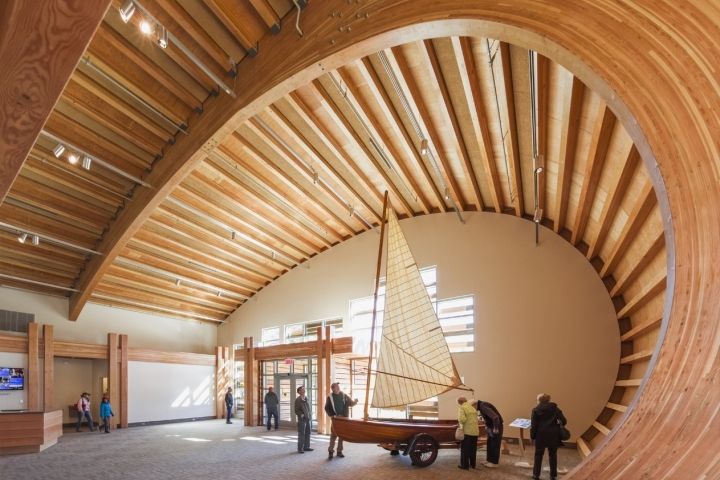
Wood purlins between the ribs bring to mind planking that forms the skin of a hull. Douglas Fir was specified for the glued-laminated structural members as it was the species New England ship builders preferred after the Civil War once the western forests had been opened up.The building’s overall form was also designed to recall natural phenomena, too, like a wind-driven wave crashing onto the shore. On its interior, the curled the structural ribs at either end inward all the way down to the floor to suggest the spiraling vertebrae of marine creatures.
Design: Centerbrook Architects and Planners
Photography: Jeff Goldberg – ESTO Photographics
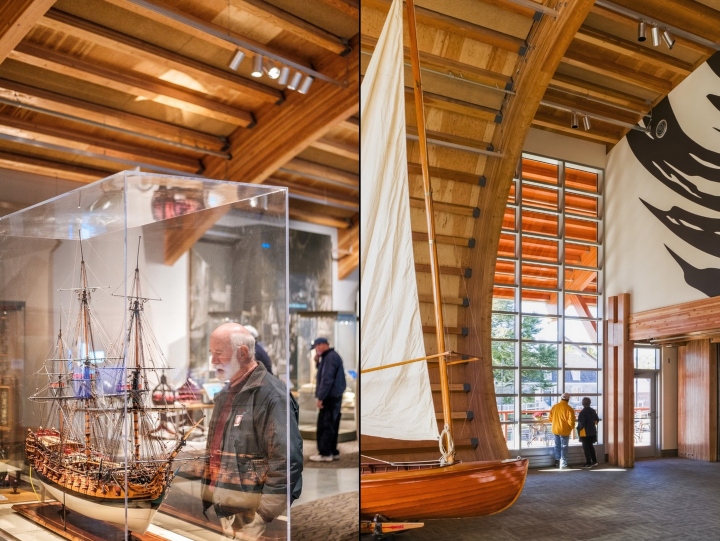
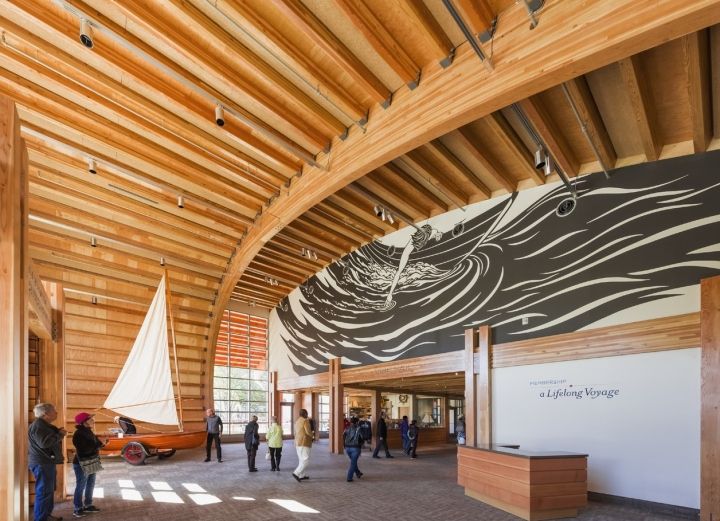

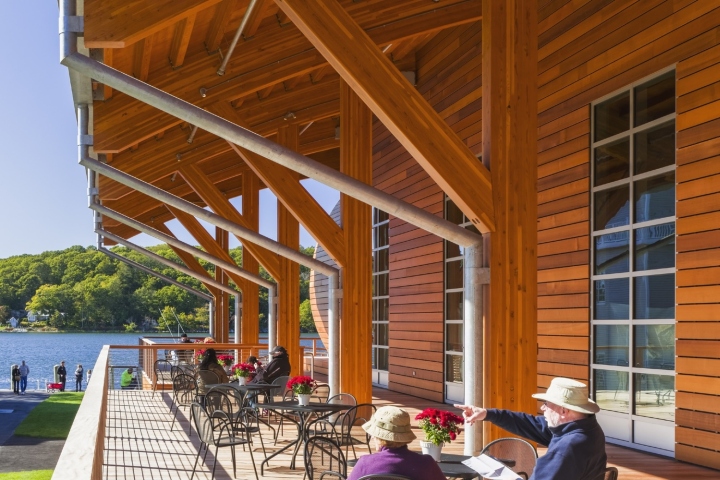
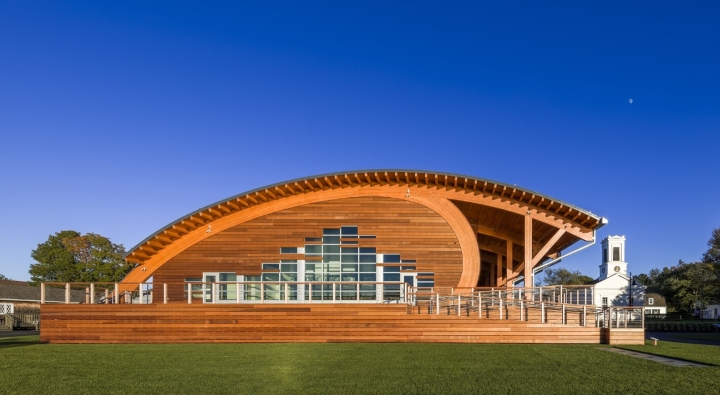
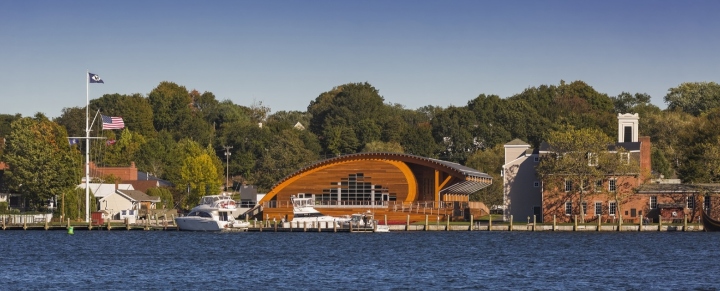
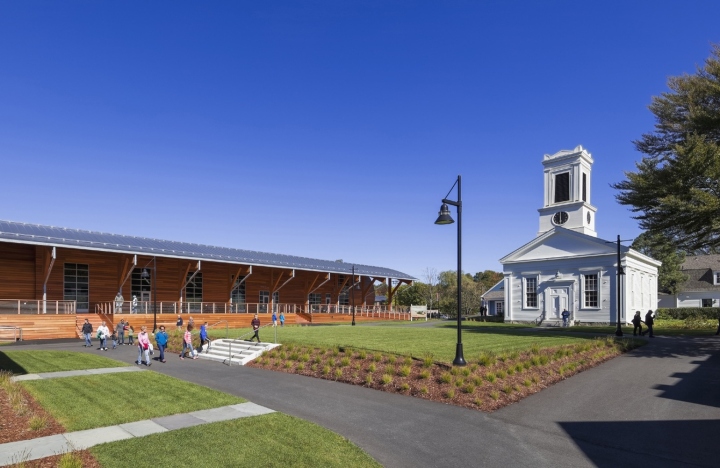
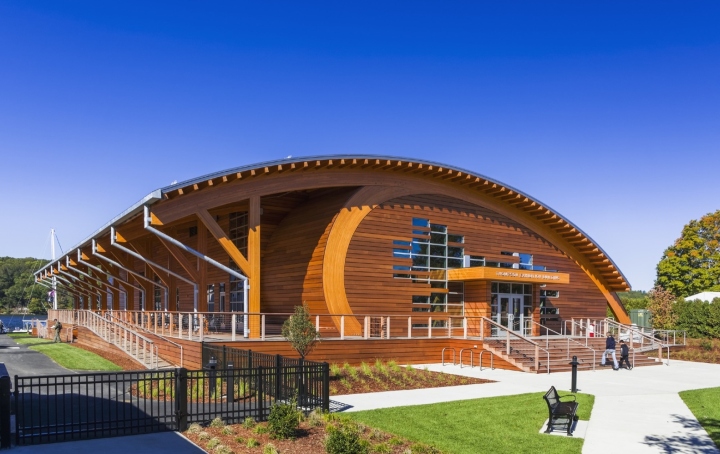
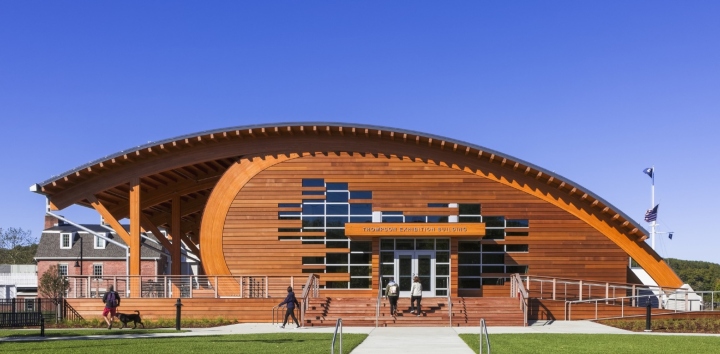
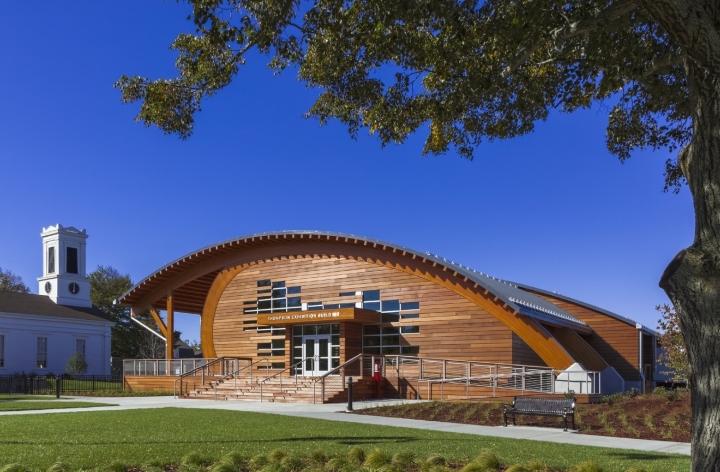
http://www.archdaily.com/802115/thompson-exhibition-building-centerbrook-architects-and-planners














Add to collection
